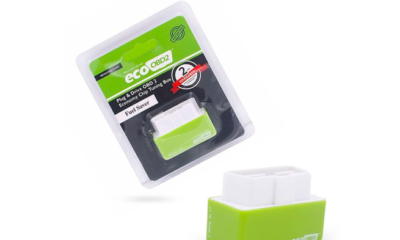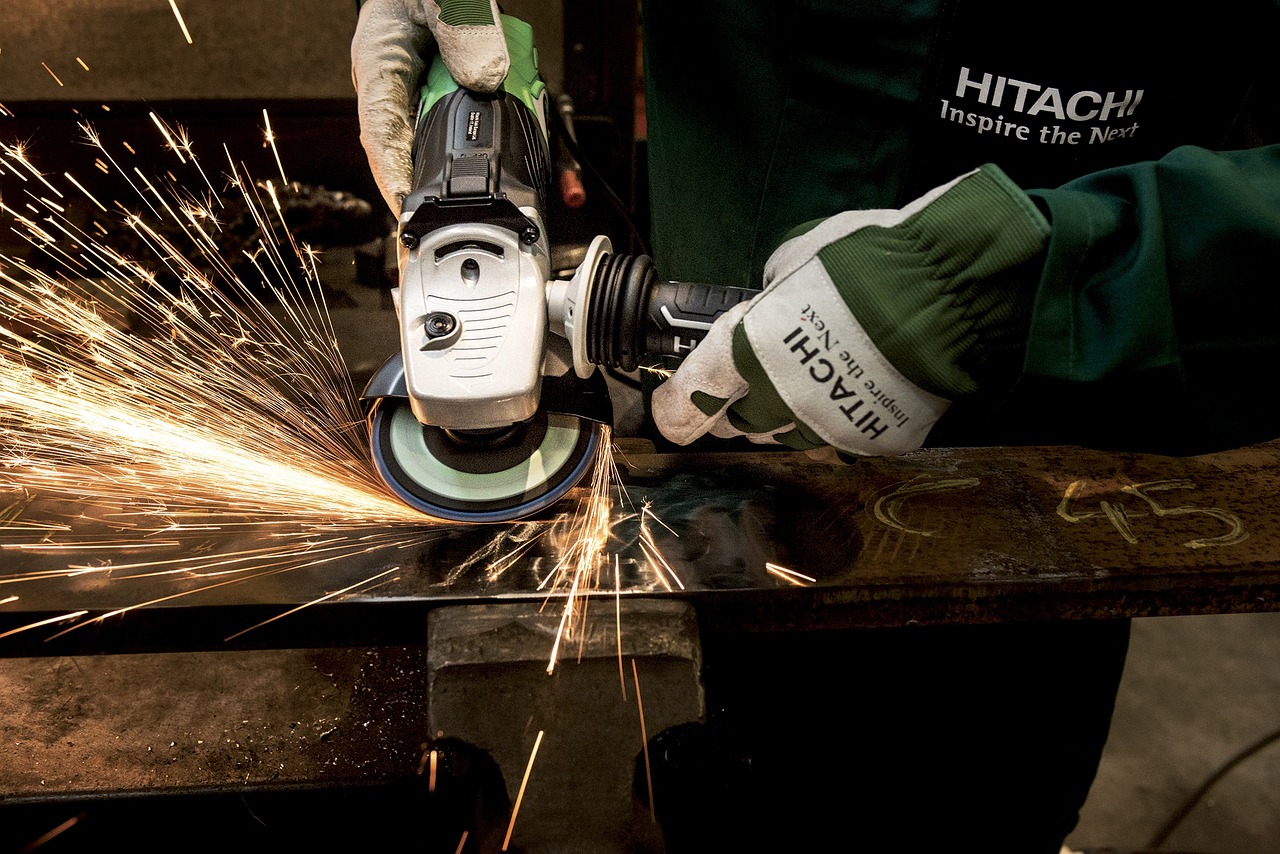Business
Heather Hadden Shares Her Tips for Home Buyers and Sellers to Get Ready for the Coming Fall & Winter

Heather Hadden of Hadden Homes helps buyers and sellers in Toronto get what they’re looking for year-round. Different seasons call for different approaches on both fronts, and Hadden has some valuable insights to share with anyone buying or selling this fall and winter.
How Buyers Can Get Ahead in the Upcoming Seller’s Market
Traditionally, home buyers find the greatest selection of available homes around May or June. From that point on, the number of homes on the market gradually declines, creating more competition and putting home buyers at more of a disadvantage.
This happens every year, and it’s being compounded by current market trends. List prices are up compared to this time last year, and the numbers of both new and active listings are down. This year, fall and winter may present a challenge for anyone looking to buy a new home. However, Hadden has some key tips to help those in the market find what they’re looking for and get the best deal they can.
1. Expect Multiple Offers on Freehold Homes
With so little inventory available, there’s going to be fierce competition. Homes are going to have multiple offers coming in, often pushing the price above asking.
2. Be Prepared Before Viewing Any Homes
Sellers will be able to pick and choose buyers, so you need to have everything in order. Hadden recommends having both a preapproval ready and having 5% of the purchase price available as soon as you make an offer to secure the sale.
3. The Early Bird Gets the Worm
If you’re interested in a listing, you should reach out as soon as possible. Hadden says that many sellers could be interested in pre-emptive offers, hopefully letting you avoid any potential bidding wars.
4. Get All the Information You Need
You should always ensure that you get all the information from your agent ahead of time, including what the current market trends say about price expectations.
5. What Sellers Can Do to Maximize Their Offers Ahead of the Holiday Season
Sellers, on the other hand, are going to have no problem finding buyers this season. Hadden says that a very strong seller’s market can be expected leading up to the holiday season and that there are a few key things sellers can do to maximize their offers.
6. Clean Up Your Home’s Exterior Now
If you’re going to be showing your home throughout the winter, it’s best to get everything squared away outside before the snow comes. Your home’s exterior is going to make a lasting first impression on buyers, so make sure your yard and gardens are in order.
7. Be Ready for a Longer Closing
While the winter market puts sellers at an advantage, it is slower overall. You might have to wait a bit longer than expected to get the best offer you can. Hadden says sellers should plan for a longer closing to avoid rushing into taking less than they can eventually get.
The Hadden Homes Method
Hadden Homes provides a full suite of real estate agent services to help both buyers and sellers get what they’re looking for this fall and winter season. With an extensive network, Hadden Homes can help buyers find the best upcoming listings and get their offers in earlier.
For sellers, Hadden Homes takes a comprehensive approach to presenting and marketing every listing they handle. Professional staging and photography, the latest online marketing methods, and more go into getting the best offers for their clients.
Business
High Volume, High Value: The Business Logic Behind Black Banx’s Growth

In fintech, success no longer hinges on legacy prestige or brick-and-mortar branches—it’s about speed, scale, and precision. Black Banx, under the leadership of founder and CEO Michael Gastauer, has exemplified this model, turning its high-volume approach into high-value results.
The company’s Q1 2025 performance tells the story: $1.6 billion in pre-tax profit, $4.3 billion in revenue, and 9 million new customers added, bringing its total customer base to 78 million across 180+ countries.
But behind the numbers lies a carefully calibrated business model built for exponential growth. Here’s how Black Banx’s strategy of scale is redefining what profitable banking looks like in the digital age.
Scaling at Speed: Why Volume Matters
Unlike traditional banks, which often focus on deepening relationships with a limited set of customers, Black Banx thrives on breadth and transactional frequency. Its digital infrastructure supports onboarding millions of users instantly, with zero physical presence required. Customers can open accounts within minutes and transact across 28 fiat currencies and 2 cryptocurrencies (Bitcoin and Ethereum) from anywhere in the world.
Each customer interaction—whether it’s a cross-border transfer, crypto exchange, or FX transaction—feeds directly into Black Banx’s revenue engine. At scale, these micro-interactions yield macro results.
Real-Time, Global Payments at the Core
One of Black Banx’s most powerful value propositions is real-time cross-border payments. By enabling instant fund transfers across currencies and countries, the platform removes the frictions associated with SWIFT-based systems and legacy banking networks.
This service, used by individuals and businesses alike, generates:
- Volume-based revenue from transaction fees
- Exchange spreads on currency conversion
- Premium service income from business clients managing international payroll or vendor payments
With operations in underserved regions like Africa, South Asia, and Latin America, Black Banx is not only increasing volume—it’s tapping into fast-growing financial ecosystems overlooked by legacy banks.
The Flywheel Effect of Crypto Integration
Crypto capabilities have added another dimension to the company’s high-volume model. As of Q1 2025, 20% of all Black Banx transactions involved cryptocurrency, including:
- Crypto-to-fiat and fiat-to-crypto exchanges
- Crypto deposits and withdrawals
- Payments using Bitcoin or Ethereum
The crypto integration attracts both retail users and blockchain-native businesses, enabling them to:
- Access traditional banking rails
- Convert assets seamlessly
- Operate with lower transaction fees than those found in standard financial systems
By being one of the few regulated platforms offering full banking and crypto support, Black Banx is monetizing the convergence of two financial worlds.
Optimized for Operational Efficiency
High volume is only profitable when costs are contained—and Black Banx has engineered its operations to be lean from day one. With a cost-to-income ratio of just 63% in Q1 2025, it operates significantly more efficiently than most global banks.
Key enablers of this cost efficiency include:
- AI-driven compliance and customer support
- Cloud-native architecture
- Automated onboarding and KYC processes
- Digital-only servicing without expensive physical infrastructure
The outcome is a platform that not only scales, but does so without sacrificing margin—each new customer contributes to profit rather than diluting it.
Business Clients: The Value Multiplier
While Black Banx’s massive customer base is largely consumer-driven, its business clients are high-value accelerators. From SMEs and startups to crypto firms and global freelancers, businesses use Black Banx for:
- International transactions
- Multi-currency payroll
- Crypto-fiat settlements
- Supplier payments and invoicing
These clients tend to:
- Transact more frequently
- Use a broader range of services
- Generate significantly higher revenue per user
Moreover, Black Banx’s API integrations and tailored enterprise solutions lock in these clients for the long term, reinforcing predictable and scalable growth.
Monetizing the Ecosystem, Not Just the Account
The genius of Black Banx’s model is that it monetizes not just accounts, but entire customer journeys. A user might:
- Onboard in minutes
- Deposit funds from a crypto wallet
- Exchange currencies
- Pay an overseas vendor
- Withdraw to a local bank account
Each of these actions touches a different monetization lever—FX spread, transaction fee, crypto conversion, or premium service charge. With 78 million customers doing variations of this at global scale, the cumulative financial impact becomes immense.
Strategic Expansion, Not Blind Growth
Unlike many fintechs that chase customer acquisition without a clear monetization path, Black Banx aligns its growth with strategic market opportunities. Its expansion into underbanked and high-demand markets ensures that:
- Customer acquisition costs stay low
- Services meet genuine needs (e.g., cross-border income, crypto access)
- Revenue per user grows over time
It’s not just about acquiring more customers—it’s about acquiring the right customers, in the right markets, with the right needs.
The Future Belongs to Scalable Banking
Black Banx’s ability to transform high-volume engagement into high-value profitability is more than just a fintech success—it’s a signal of what the future of banking looks like. In a world where agility, efficiency, and inclusion define competitive advantage, Black Banx has created a blueprint for digital banking dominance.
With $1.6 billion in quarterly profit, nearly 80 million users, and services that span the globe and the blockchain, the company is no longer just scaling—it’s compounding. Each new user, each transaction, and each feature builds upon the last.
This is not the story of a bank growing.
This is the story of a bank accelerating.
-

 Tech4 years ago
Tech4 years agoEffuel Reviews (2021) – Effuel ECO OBD2 Saves Fuel, and Reduce Gas Cost? Effuel Customer Reviews
-

 Tech6 years ago
Tech6 years agoBosch Power Tools India Launches ‘Cordless Matlab Bosch’ Campaign to Demonstrate the Power of Cordless
-

 Lifestyle6 years ago
Lifestyle6 years agoCatholic Cases App brings Church’s Moral Teachings to Androids and iPhones
-

 Lifestyle4 years ago
Lifestyle4 years agoEast Side Hype x Billionaire Boys Club. Hottest New Streetwear Releases in Utah.
-

 Tech7 years ago
Tech7 years agoCloud Buyers & Investors to Profit in the Future
-

 Lifestyle5 years ago
Lifestyle5 years agoThe Midas of Cosmetic Dermatology: Dr. Simon Ourian
-

 Health6 years ago
Health6 years agoCBDistillery Review: Is it a scam?
-

 Entertainment6 years ago
Entertainment6 years agoAvengers Endgame now Available on 123Movies for Download & Streaming for Free
